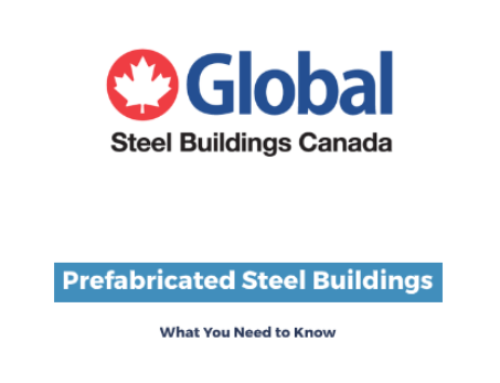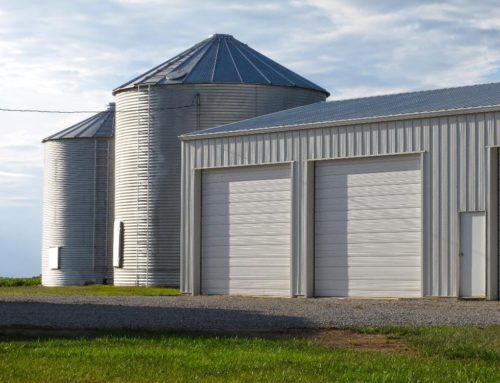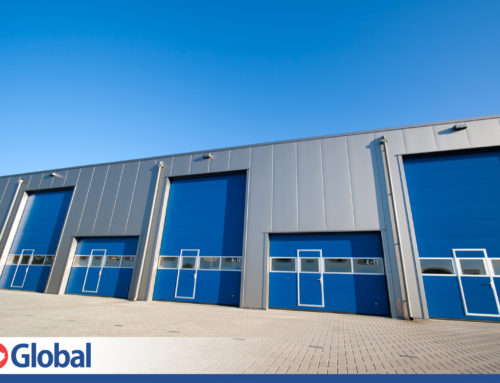In extreme climates pre-engineered steel buildings are the perfect choice for your project to weather the seasons. The versatility of steel makes it an excellent choice for commercial, agricultural and other storage applications. Steel, given its ability to be recycled again and again without losing quality, is one of the most sustainable construction materials on the market today.
One of the greatest advantages of steel buildings is that they are built to last. They can be designed to withstand the most severe weather conditions, including snow storms, hurricanes, and earthquakes. Steel roofs are still the best choice in many climates, presenting advantages over other roofing options.
Snow, if not properly controlled on your building, can cause extensive damage. The experts at Global Steel Buildings Canada are able to help you make the right choice for your specific needs.
Steel has a very high strength to weight ratio which offers stability against severe weather conditions including high winds and heavy snowfall. The prefabricated steel building package from Global Steel Buildings Canada are guaranteed to meet or exceed all snow loads and building codes for which the building was designed. Our package will perform in extreme climates.
By nature steel provides protection against insect infestation, is fire resistant and non-combustible.
Extreme Climates – Canada’s Winters – Steel Roofs Perform
Strong winds affect snow build up on your steel roof. By orienting your new steel building roof perpendicular to the prevailing wind, it will gust across the windward surface of the roof and the snow formations will pile up on the leeward side of the building. This will prevent uneven accumulation on the roof surface.
In snow country a straight simple gable roof will shed snow quicker than a more complex roof. Valleys and other obstructions cause snow to build up unevenly on the roof surface. If the slope is too extreme it can cause snow and ice to slide off all at once. Too shallow allows the snow to stay on the roof surface longer putting unnecessary weight on your building. Sliding snow and ice cause more damage than excessive snow on the roof surface. Packed snow can weigh 30 pounds-per-cubic-foot or more.
Benefits of Climate Control Inside Your Steel Building
With Canada’s extreme climates it can go from sweltering to strong winds and blizzards in just a few months. Beyond the obvious, providing comfort for those working inside the building or livestock residing within, there are several benefits to climate control in your steel building.
- Climate control provides several benefits beyond human comfort or survival.
- Depending on the product being manufactured or warehoused climate control is necessary to control humidity and to heat and cool.
- You can save on energy costs by employing climate control methods like solar panels.
- Some equipment, for instance, computer servers operate more efficiently in a climate controlled environment.
- Energy Star rated panels are used to help regulate your building’s temperature and save you on high electricity prices in peak months.
- Maximum sized windows are used to utilize natural light and reduce your electricity bill.
Buildings with southern or western exposure receive much more heat from the sun than eastern and northern facing buildings. Building orientation should be considered in terms of energy efficiency. A lighter colored roof will also reflect sun naturally cooling your building. The interior design of a building also impacts climate control. Multiple openings, overhead doors, man doors and windows allow heat to escape and cool air to come in every time they are opened.
Our high R value insulation packages provide excellent energy efficiency for even the coldest climates. Insulating your metal building is especially important as it will prevent moisture buildup and condensation. Secondly insulation will ensure your interior temperature is controlled and reduce your energy costs by losing cold or warm air. Metal building insulation is installed over the framing to cause continuous coverage instead of panel coverage like in traditional building materials. Insulation can also reduce exterior noise.
Using fire retardant insulation will also offer additional fire protection for your building and it’s contents. While steel is naturally fire resistant, non fire retardant insulation will allow flames to spread causing potential danger to the people and contents within the building.
Selecting energy efficient and appropriately sized HVAC systems for your building will reduce humidity, an important consideration. Installing a programmable thermostat will help manage energy costs. Proper ventilation will help control moisture.
Steel Buildings Can Withstand Hurricane Force Winds
Of course extreme cold and interior climate control are not the only factors. In Eastern Canada and many parts of the world high winds and hurricanes are also a factor. One of the greatest advantages of a steel building is the fact that they are built to last. Correctly engineered steel buildings can withstand hurricane force winds. When hurricane’s strike in Florida and other storm prone areas prefabricated steel buildings are often the only structures left unharmed.
Designed with extra reinforcement at wall junctions and roof edges, today’s steel buildings can withstand wind forces up to 170 MPH.
The experts at Global Steel Buildings Canada are happy to provide you with more information on the best choices for your specific needs. Contact us today for more information.
Also, Check out! Pre-Engineered Building – Advantages & Disadvantages.






